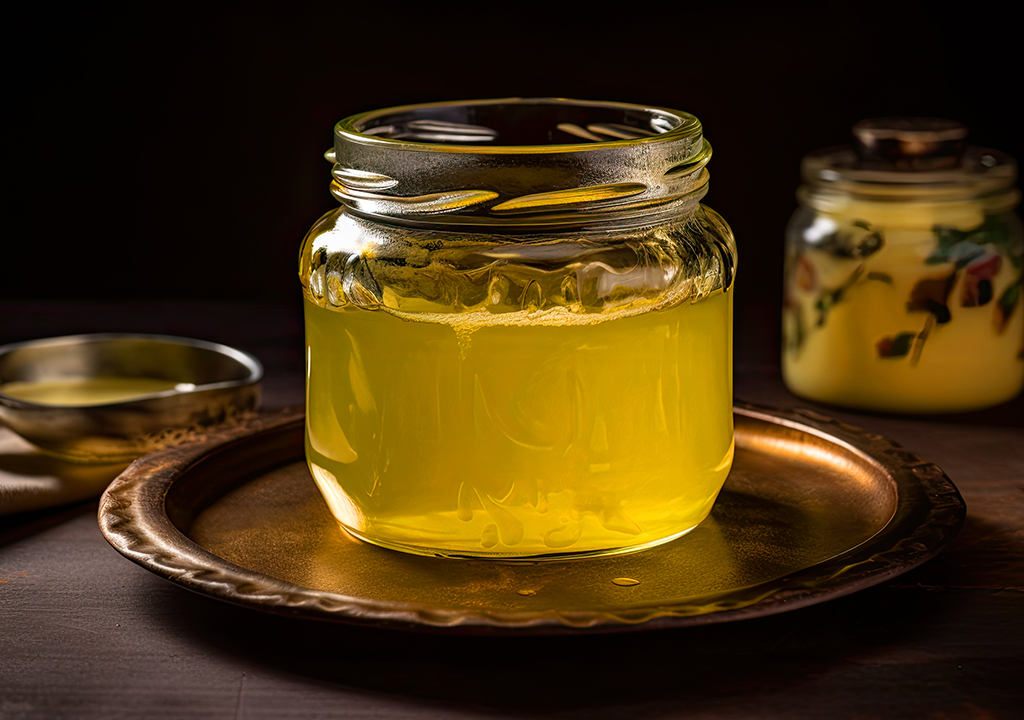Introduction: The Golden Elixir of Indian Kitchens
For centuries, ghee has been a staple in Indian households, revered for its rich flavor and numerous health benefits. Yet, in recent years, ghee has faced scrutiny and misconceptions, especially with the rise of various dietary fats. So, what’s the real deal? Is ghee truly healthy, or is it just another culprit in the world of unhealthy fats? Let's unravel the truth about ghee, explore its benefits, debunk common myths, and discover how to incorporate it into a balanced diet. Special focus will be given to A2 ghee, a traditional variant known for its superior qualities.
The Benefits of Ghee: More Than Just Flavor
Ghee, also known as clarified butter, is made by simmering butter to remove water content and milk solids, leaving behind pure butterfat. This process not only enhances its flavor but also boosts its nutritional profile.
1. Rich Source of Healthy Fats
Ghee is a powerhouse of healthy fats, including omega-3 and omega-6 fatty acids. These essential fats play a crucial role in brain function, reducing inflammation, and supporting heart health. Unlike some other fats, ghee contains butyric acid, a short-chain fatty acid known for its anti-inflammatory properties and its ability to support gut health.
2. High Smoke Point
One of ghee’s standout qualities is its high smoke point (around 250°C or 482°F). This makes it an excellent choice for cooking, as it doesn’t break down into harmful compounds when exposed to high heat, unlike many vegetable oils.
3. Lactose and Casein Free
Ghee is free from lactose and casein, making it suitable for people with dairy sensitivities or lactose intolerance. By removing the milk solids during the clarification process, ghee provides a dairy alternative that can be enjoyed without digestive discomfort.
4. Nutrient Dense
Ghee is rich in fat-soluble vitamins A, D, E, and K. These vitamins are essential for maintaining healthy vision, immune function, skin, and bones. Additionally, ghee’s nutrient density means that even a small amount can offer significant health benefits.
5. The Superiority of A2 Ghee
A2 ghee, made from the milk of cows that produce A2 beta-casein protein, is considered superior to regular ghee. This type of ghee is easier to digest and is believed to have more health benefits. A2 ghee is produced from the milk of traditional Indian breeds like Gir and Sahiwal cows, which are known for their high-quality milk.
Common Misconceptions About Ghee
Despite its benefits, ghee has been misunderstood and mislabeled, particularly during the low-fat diet craze of the 20th century.
Myth 1: Ghee Is Bad for Heart Health
One of the most prevalent myths is that ghee contributes to heart disease. However, recent studies suggest that the saturated fats in ghee can actually help maintain healthy cholesterol levels when consumed in moderation. The key is balance and ensuring it is part of a diet rich in diverse, healthy fats.
Myth 2: Ghee Causes Weight Gain
Another misconception is that ghee leads to weight gain. While ghee is calorie-dense, it can promote weight loss by improving digestion and metabolism. Butyric acid in ghee helps boost metabolism and supports gut health, which can aid in weight management.
Myth 3: All Fats Are the Same
Not all fats are created equal. Trans fats and processed vegetable oils can be harmful, but the natural, unprocessed fats in ghee offer numerous health benefits. It’s crucial to distinguish between harmful fats and those that provide essential nutrients.
Incorporating Ghee Into a Balanced Diet
Ghee’s versatility makes it easy to include in various dishes, enhancing both flavor and nutrition.
Cooking and Sautéing
Use ghee for cooking and sautéing vegetables, meats, and spices. Its high smoke point ensures that it remains stable at high temperatures, preserving the nutritional integrity of your food.
Baking
Replace butter or oil with ghee in your baking recipes. Ghee can add a rich, nutty flavor to baked goods while providing the benefits of healthy fats.
Spreading and Topping
Spread ghee on toast, pancakes, or parathas. A dollop of ghee on hot rice or dal can enhance the flavor and increase the nutrient content of your meals.
Traditional Remedies
Ghee is often used in traditional Ayurvedic remedies. For instance, a teaspoon of ghee mixed with warm milk and a pinch of turmeric can act as a soothing bedtime drink that promotes better sleep and digestion.
Take away
Ghee is more than just a cooking fat; it's a nutrient-rich food with numerous health benefits. By understanding its true value and debunking common misconceptions, you can confidently incorporate ghee into your diet. Remember, moderation is key, and when used appropriately, ghee can be a healthy and delicious addition to your meals.
And if you want the best, consider opting for A2 ghee. With its superior nutritional profile and easier digestibility, A2 ghee stands out as an exceptional choice for those looking to enhance their health and well-being. So go ahead, embrace the golden elixir of Indian kitchens, and enjoy the wholesome goodness of ghee.


